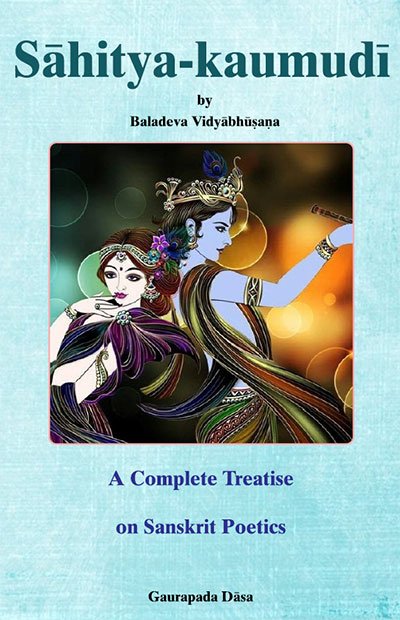Sahitya-kaumudi by Baladeva Vidyabhushana
by Gaurapada Dāsa | 2015 | 234,703 words
Baladeva Vidyabhusana’s Sahitya-kaumudi covers all aspects of poetical theory except the topic of dramaturgy. All the definitions of poetical concepts are taken from Mammata’s Kavya-prakasha, the most authoritative work on Sanskrit poetical rhetoric. Baladeva Vidyabhushana added the eleventh chapter, where he expounds additional ornaments from Visv...
Text 10.135
यथा,
मुख-पुट-निहित-कराङ्गुलिर् उच्चल-चरणः स देवकी-सूनुः ।
क्षण-रुदित-स्मित-कुशलो व्रज-कुल-मुदम् अतितराम् अतनोत् ॥
yathā,
mukha-puṭa-nihita-karāṅgulir uccala-caraṇaḥ sa devakī-sūnuḥ |
kṣaṇa-rudita-smita-kuśalo vraja-kula-mudam atitarām atanot ||
mukha—of the mouth; puṭa—in the hole; nihita—are put; kara—of the hand; aṅguliḥ—He by whom the fingers; uccala—are going upward; caraṇaḥ—He whose feet; saḥ—He (the well-known one); devakī—of Yaśodā[1]; sūnuḥ—the son; kṣaṇa—in a moment; rudita—in crying; smita—in smiling; kuśalaḥ—He is expert; vraja—of the cowherd village; kula—of the community; mudam—the joy; atitarām—very great; atanot—made.
By placing His fingers in His mouth, by waving His feet upward in the air, and by crying for a moment and smiling, Yaśodā’s son highly increased the delight of the cowherd community.
